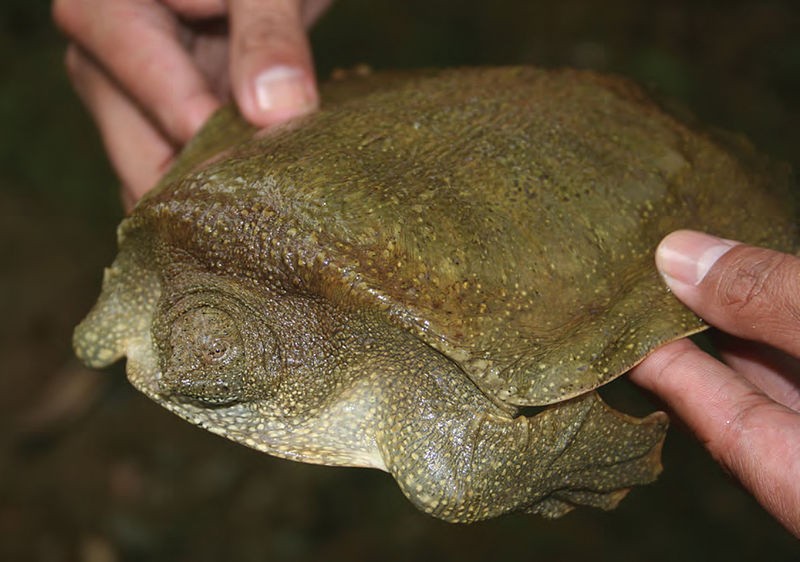An invasive animal from China has been discovered in the Philippines. More invasive Chinese softshell turtles have been found in the country.

Raising Concerns
Conservation organizations have warned that the appearance of another invasive species native to China in Philippine waters might threaten the region's indigenous aquatic life. A conservation organization has issued a warning after the turtle was spotted in the Philippine seas once more, claiming that it is an invasive alien species (IAS) or marine pest that might threaten the nation's indigenous aquatic life.
Invasive Turtle
The species Pelodiscus sinesis, sometimes known as the Chinese softshell turtle, develops to a length of between 4 and 10 inches and is frequently kept as a pet in China. It was discovered in a river in the coastal province of La Union, and locals are unsure how it got there.

According to the nongovernmental organization Coastal Underwater Resource Management Actions (Curma), a conservation group protecting sea turtles based in San Juan, the barangay captain (local community leader) of Nagsabaran in San Juan, La Union in the Philippines, reported the invasive alien species (IAS) to the neighborhood disaster risk reduction and management office. The organization's volunteers "patrol the shoreline and protect turtle nests from threats, along with other actions to help conserve marine life and the ecosystem overall."
The Department of Environment and Natural Resources (DENR) classifies the turtle as an IAS. As such, it is "considered... a threat to the Philippine endemic and indigenous fish and aquatic creatures, as well as to local fishponds and fish enterprises," according to Curma.
IASs as "organisms that are disseminated outside of their normal distribution and pose a danger to native ecosystems and biodiversity," by the DENR-Biodiversity Management Bureau.
According to a DENR rule on introducing species that are regarded to be IAS, the introduction of Chinese softshell turtles to wetlands and other places of the Philippines "is unapproved, illegal, and punishable with imprisonment of up to eight years or a fine of up to P5 million, or both."
The Chinese softshell turtles are also prized as a delicacy in many other nations, where they are prepared as turtle soup.
This species has been seen often all across the Philippines. A Chinese softshell turtle was discovered in Quezon City in 2020. The owner requested help from the area DENR office to recover the turtle.
Invasive Species
Invasive species may harm the ecosystem's natural resources and human usage of those resources. The ballast water of oceangoing ships, purposeful and unintentional discharges of aquaculture species, aquarium specimens or bait, and other methods can all be used to introduce an invasive species to a new location.
Native plants and animals may go extinct due to invasive species, which can decrease biodiversity, compete with native species for scarce resources, and disrupt ecosystems. Ecosystems along the coast and the Great Lakes may be severely disrupted, with significant negative economic effects.
Read also: Fish Leather: Sustainable Leather Made from Invasive Species May Become the Next Big Thing
For the most recent updates from the animal kingdom, don't forget to follow Nature World News!
© 2025 NatureWorldNews.com All rights reserved. Do not reproduce without permission.





